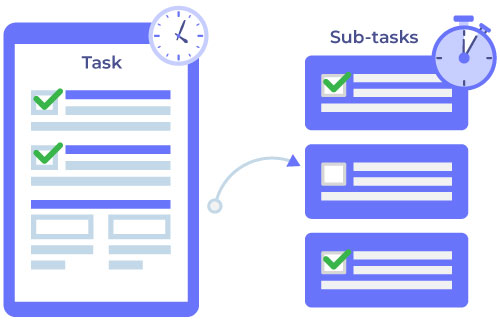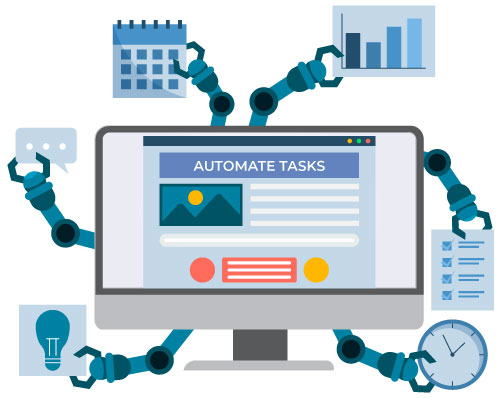Everything To Know About Workload Management, Is Here
Workload management is the process of allocating work among your team members while analyzing their utilization and performance, calculating individual KPIs, and assigning tasks to employees who can do them.
It is the act of carefully distributing work among your team members in order to achieve maximum productivity. It would be best if you did not overwhelm someone unless a unique circumstance necessitates extra work. Even if your intentions are genuine, they may eventually backfire and negatively impact team performance.
When businesses strive to improve their efficiency, they sometimes forget that workload management is about more than just hours and tasks. For starters, it’s critical to distinguish between task management and time management. Workload management is a systematic method of planning, estimating, and tracking work that balances workload demands throughout the company for people and groups.
Following are the tips & ways to create workload management
1. Planning is the key

Always take a step back and look before taking a jump. In both personal and professional situations, taking the time to prepare activities and projects is critical. It allows you to take a step back and focus on what’s essential, no matter what you’re preparing.
Setting a budget for each job, determining the start and finish dates, identifying and describing your tasks, and assigning them to a particular milestone are essential steps. There are other methods to perform the ritual and establish a culture of planning, all of which are worthwhile since only then can you create project schedules, measure progress, and keep track of time.
2. Resource Availability

It is critical to have complete visibility of resource allocations to projects and activities to make the most of people’s time and abilities. If you’re working on many projects at the same time, this gets more challenging. If you have a resource portfolio of more than 10 employees assigned to several projects, it’s time to invest in a basic but effective resource management solution.
You may now plan and distribute project tasks in advance if you have a clear view of resource availability. You should know whether someone will be unavailable during the project and if there are any additional limitations. It is preferable to transfer the work to another colleague if you discover that a critical resource will be unavailable when you need them. With the help of task management software, you can efficiently manage and allocate project tasks considering resource availability and constraints.
3. Split Tasks into Sub-tasks

Breaking down each project into manageable parts aids in the crystallization of the project strategy and everyone’s expectations. The more specific you can be about scheduling, money, and tasks, the easier it will be to foresee what could go wrong with the project and improve it for the team.
It will be simpler to manage your workflow if you divide your tasks into subtasks if you need to postpone something or have some parts of the task execution start sooner.
Let’s face it; there’s a certain satisfaction in ticking the boxes next to the tasks you or your team have accomplished. To-do lists are one of the most common task management strategies and for a good reason.
A to-do list can help you feel less anxious and stressed by providing structure to your workflow and fooling your brain into believing the activity has already been finished. It’s simpler to concentrate and focus on the most critical parts of the project now that fear is gone. You can also contact Peppybiz to ease your workload.
4. Avoid Multitasking

We all know we should be doing more, but attempting to do too much at once may be stressful and overwhelming. To keep your job from grinding to a halt, you’ll need discipline and attention to do one task at a time.
Multitasking is, in reality, a myth. The human brain is not wired to perform many things at once, at least not successfully. Multitasking in project management might cause you to prioritize haste above relevance and importance.
Task and workload management needs a laser-like concentration, which multitasking excels at. To be honest, it’s challenging to avoid multitasking, but try to prevent it whenever possible.
5. Introduce Daily Stand-ups

The most straightforward approach to establishing transparency is getting the entire staff together for at least 10 minutes every day. After all, efficient communication and regular standups are excellent ways to keep everyone on the same page throughout the project.
Your team members will learn about each other’s work, understand what they need to accomplish next, and brainstorm if there is a problem preventing the project from succeeding. You can readily detect whether any dependencies prevent team members from performing their best work using daily standups.
6. Automate Tasks

Don’t forget to put on your breathing mask first. You don’t want to fall and take everyone with you, so manage your task well. According to recent research by Wellingtone, 43% of project management specialists spend one or more days each month manually generating project reports. Administrative work is regarded as a quiet killer of productivity for a good cause.
Manually doing repeated activities and spending a significant amount of time gathering data costs time, introduces human error, and reduces employee productivity. According to a recent LinkedIn study, 47% of project managers want project accounting to be automated.
There are tools and companies that can help you save time. You can also use Peppybiz to produce reports in a few clicks and then share them with others without requiring them to have a Forecast account.
7. Practise Self-care
Your staff will get exhausted if they do not take care of themselves. Peppybiz is a people-first firm that prioritizes all team members’ well-being over the drive to increase revenues and job titles.
When everyone is adequately fed, hydrated, has enough sleep, and leads an active lifestyle, the entire team improves their decision-making abilities, and the firm as a whole prospers. A healthy squad produces profit and job development as a natural result.
As a result, implement workload management in your workplace if you want your staff to perform at their best. Various workload management solutions may give you real-time information about the activities that your team is working on.
How can you identify the symptoms of workload imbalance within your employees?
Breakdown in Communication
A gradual breakdown in communication between team members is one of the first indicators of an uneven workload within the team. When this happens, some team members are shut out of essential project discussions, causing your whole team’s workflow to suffer.
Reevaluate communication procedures and make sure everyone is aware of them to get everyone back on the same page. In its Code of Conduct, Google, for example, has explicitly outlined its communication procedures and the steps for expressing workplace problems/concerns.
Conclusion
Finally, keep in mind that achieving the optimal, balanced, and flawless management level is unattainable. After completing numerous milestones, you may encounter significant challenges that put you back. The key to success, though, is to build resilience and tenacity in oneself. Take any comments with a grain of salt and keep doing what you’re good at.
Workload management software like Peppybiz features comprehension and monitoring of tasks, deadlines, and resources.



